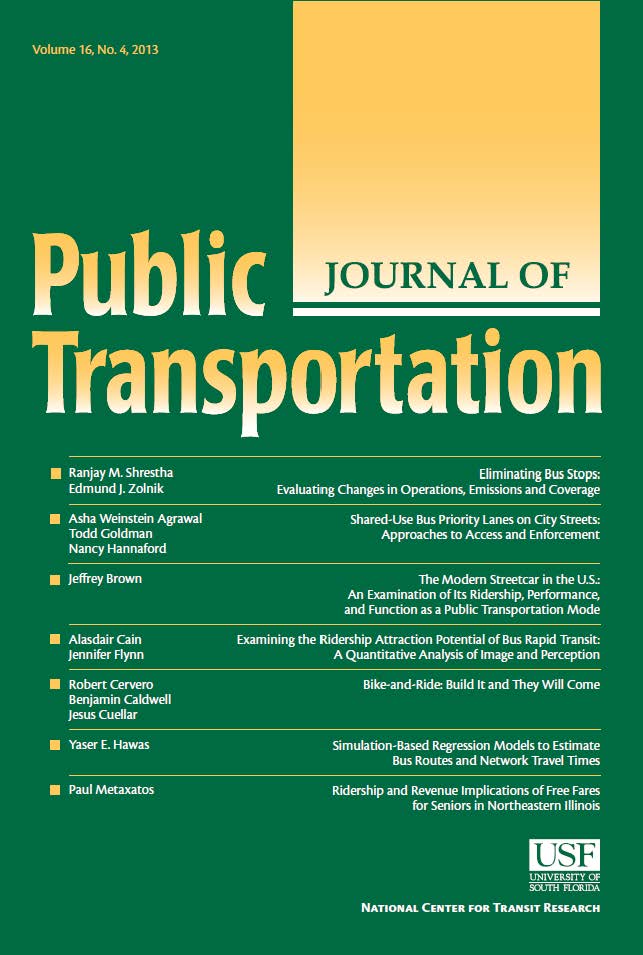Decency in the digital era: Exploring preferences of transit riding among females in different life stages
IF 2
4区 工程技术
Q3 TRANSPORTATION
引用次数: 0
Abstract
Investigating women’s public transit usage intentions (TUIs) is essential for enhancing service quality and ensuring female passengers’ travel rights. However, for women with distinct socioeconomic backgrounds, the heterogeneity of factors impacting their TUIs is not thoroughly explored. In this research, we conducted a survey in Hangzhou, China, collected 1294 valid questionnaires from women, and employed the Latent Class Analysis method (LCA) and Ordered Logit Model (OLM) to identify the distinct determinants of TUIs among different female groups. The findings reveal that: (1) Retired elderly women, who are less able to walk, require more spatial accessibility of transit services and the availability to reduce their first/last-mile walking and waiting time; (2) Middle-aged and high-income groups prioritize comfort, punctuality, and safety, particularly favoring the provision of ladies-only seating areas; (3) Young and student groups' transit usage is predominantly influenced by fare policies. By incorporating digital technologies, customized operational strategies such as real-time transit information systems, surveillance cameras, tiered discount schemes, and digital payment services are recommended to improve the TUIs among different female groups. Our work contributes to creating a more female-friendly public transit environment.
数字时代的礼仪:探索不同人生阶段女性的交通出行偏好
调查女性的公共交通使用意向对于提高服务质量和保障女性乘客的出行权利至关重要。然而,对于具有不同社会经济背景的女性,影响其tui的因素的异质性尚未得到充分探讨。在本研究中,我们在中国杭州进行了一项调查,收集了1294份有效的女性问卷,并采用潜在类分析方法(LCA)和有序Logit模型(OLM)来确定不同女性群体中tui的不同决定因素。研究结果表明:(1)老年退休妇女对公共交通服务的空间可达性要求更高,对减少第一英里/最后一英里步行和等待时间的可得性要求更高;(2)中年和高收入人群优先考虑舒适性、准时性和安全性,尤其喜欢提供女性专用座位区;(3)青年和学生群体的交通使用主要受票价政策的影响。通过结合数字技术,建议采用定制的运营策略,如实时交通信息系统、监控摄像头、分层折扣计划和数字支付服务,以改善不同女性群体的tui。我们的工作有助于创造一个更有利于女性的公共交通环境。
本文章由计算机程序翻译,如有差异,请以英文原文为准。
求助全文
约1分钟内获得全文
求助全文
来源期刊

Journal of Public Transportation
TRANSPORTATION-
CiteScore
6.40
自引率
0.00%
发文量
29
审稿时长
26 days
期刊介绍:
The Journal of Public Transportation, affiliated with the Center for Urban Transportation Research, is an international peer-reviewed open access journal focused on various forms of public transportation. It publishes original research from diverse academic disciplines, including engineering, economics, planning, and policy, emphasizing innovative solutions to transportation challenges. Content covers mobility services available to the general public, such as line-based services and shared fleets, offering insights beneficial to passengers, agencies, service providers, and communities.
 求助内容:
求助内容: 应助结果提醒方式:
应助结果提醒方式:


